The Engines
Engine Type 912 – 12 Cylinders
The Porsche House made it the norm since 1967 to participate in the tests for the Manufacturers’ Championship only with new machines, because the cost of developing and building them was partially offset by the sale of the used units at the end of each season.
This policy gave it very good results in the sporting field, that is how the German house took advantage of the reduction in the minimum number of machines that had to be built for homologation and produced a new model, with a 12-cylinder engine, derived from the 3-liter 8 cylinders, keeping the same diameter and piston stroke measurements.
With this basis, Porsche assured reliability, since the 908 was a highly developed and proven reliable impeller. 4 cylinders were simply added to that engine, hence its designation of 912: 908 + 4. Until then, cars equipped with American engines derived from the series and the 3-liter prototypes built by Porsche and Ferrari were on a level of equivalence in the field of performance.
At the end of the season 1968, and more specifically du Rante winter 1968-1969 Porsche prepared rapidly and with great discretion, a new model that would be equipped with a 12 – cylinder engine and 4,494 cc to take advantage of regulatory freedoms of the World Championship of Makes and with which he hoped to unbalance the balance in his favor against his adversaries. Under the direction of the Engineer Ferdinand Piech (today President of the Volkswagen group ), the 917 was presented in society at the Geneva Motor Show in March 1969. A month later the CSI had inspected 25 Porsche 917 fully finished, minimum number of cars required for homologation.
The engine was designed by Hans Mezger , who had previously collaborated on the design of the engine for the 908 . It was a flat-12 (twelve opposed cylinders) that resulted from “joining” two 6-cylinder 2.2-liter 911 engines . It was air-cooled like all Porsche engines , the distribution had two overhead camshafts for each 6-cylinder line and two valves for each cylinder.
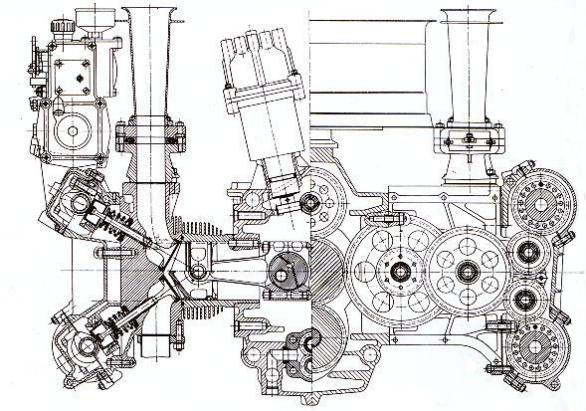
To avoid torsional vibrations of the crankshaft, the power take-off was carried out from the center of the engine, where there was also the cooling turbine (blower) that absorbed only 17 HP at full speed.
The 12 cylinder center blower is capable of producing 148 cubic meters of air per minute at 4800 rpm.
It had a central drive mechanism using two gears connected to the output shaft leading to the clutch. The peculiarity was in the fact that the same teeth never rub against each other, since the gear wheels had different numbers of teeth (32 and 31). The loss of torque was on the order of three percent. In the photo you can see the Porsche operators in the process of assembling the engine. The chrome moly-nickel-steel crankshaft is 757mm.
The cylinders were chrome and the connecting rods were forged titanium. It delivered a power of 520 HP, although then over time it evolved towards a greater displacement with what at the end of 1971 it comfortably exceeded 600 HP. In any case, that initial power at the time of presenting the new 917 , comfortably exceeded the 430 HP of the Ford GT40.
When the 917 had reached its maturity, the Ferrari 512 S appeared , a worthy adversary that improved from race to race. For this reason, in the course of the ’70 Season, the displacement was brought to 4907 cm³, increasing the diameter of the cylinders from 85 to 86 mm. and the piston stroke from 66 to 70.2 mm. The power thus reached 600 HP always at 8,500 rpm and the maximum coupling went from 50 to 54 mkg.
Despite the increased displacement and some other modifications, including stiffer front springs which – among other things – made him lose Porsche ‘s 12 hours. of Sebring ’70 because of the lack of time to rehearse them.
The weight of the car was always close to 800 kg. minimum allowed by the regulations and this was one of its main advantages over the Ferrari 512 S and 512 M which were probably more powerful but with 100 or 120 kg. disadvantage.
The 4.5 liter engine used in the 1969 917s had 540 HP. At the end of 1971, they had a 5-liter engine with 630 HP.
Engines for Participation in the Can-Am Series
A 16-cylinder engine was developed once the design of the 917 was completed. This experimental research was not destined for the Can-Am , but when it was later decided to participate there, it was considered as one of the driving options for the 917.
The 7.2-liter normally aspirated version of the 16-cylinder engine produced 850 HP. It was the version that used the modified 917PA (the original Can-Am), which was lengthened by 10.6 inches. Either way, poor weight distribution and handling gave Porsche only a marginal advantage over the ever-improving McLaren.
Mark Donohue drove it and said: “the thing is a monster. You can hear one part of the engine start up before the other” – “the thing was a monster. You could hear one end (of the engine) start up before the other. ”
Finally, Porsche chose to place the 917 with a 12-cylinder turbocharged engine, since in previous tests, it had shown powerful 1500 HP. The final version of the Can-Am 917 was the so-called 917/30. It was powered by a 5.4-liter 12-cylinder engine with two turbos. It delivered 1100 HP with 1.3 bar of pressure in the turbo and more than 1500 HP with 2 bar.
Engine type 917.16 – 16 Cylinders
After the 917 was finished , a 16-cylinder engine was developed. This experimental research was not destined for the Can-Am , but when it was later decided to participate there, it was considered as one of the driving options for the 917. In fact, a war of nerves was being waged between the Porsche and Ferrari technical teams , with secrets and false rumors of all kinds, designed to “scare” the adversary. The development of the 16-cylinder engine by Porsche was a case in point. Piech and his team found it fun to develop monster gadgets just to worry Ferrari.
The normally aspirated version of the 16-cylinder engine had 7.2 liters of displacement and produced 850 HP. (Other sources report 6.9 kitros and 755 HP). It was the version that used the modified 917PA (The original Can-Am), which was lengthened by 10.6 inches.
Either way, poor weight distribution and handling gave Porsche only a marginal advantage over the ever-improving McLaren. Mark Donohue drove it and said: “The thing is a monster. You can hear one part of the engine start up before the other” – “The thing was a monster. You could hear one end (of the engine) start up before the other. “-
Porsche finally chose to compete in Can Am with turbocharged 12-cylinder engines, since in the first tests with this engine, it obtained more than 1500 HP !! The 16-cylinder engine was tested on the Porsche 917 PA (chassis 027) in tests carried out at Zeltweg in October 1969.
The 16-cylinder engine project started as a purely investigative development. It was first built for research. Initially, the German engineers planned a 6 or 7 liter, a thought that was maintained when deciding the car’s participation in the Can Am Series. Basically, the german engineers planned a 6 or 7 liters (some of them thought of it when Porsche decided to enter cars in the Can-Am).
The Suspension
Homologated in May ’69, the 917 was not imposed immediately. Mainly due to certain vices that made it very difficult to drive. So much so that right after the first race, Porsche engineers almost completely redesigned the front suspension, eliminating the “anti-dive” suspension, to prevent it from sinking the front nose in order to improve handling. stability on the straights. This modification was compensated by the application of stiffer front springs.
Modified in this way, and fitted with a body with an extremely tapered rear, the 917 participated in the 24 hours. Le Mans in 1969 and stayed from the start and for 20 hours at the top. According to the factory, the car reached 380 km / h on the L’Hunnadieres straight of the Le Mans circuit , a fact proven in June 1971 when in unofficial night tests prior to that edition of the 24 Hours, Jackie was timed Oliver the chilling speed of 396 kmh. Stability at these speeds was ensured by means of movable rear ailerons.commanded by suspension. With them, variations in incidence were compensated according to the movements of the suspension, eliminating the danger of excessive downforce.
The car lost the race due to clutch problems, but before that, the 917 had been able to guide the race for 20 hours thanks to its extraordinary speed on the straights, but at the moment there were still problems of maintenance.
Only at the end of the 1969 season, through the adoption of a new wedge-shaped bodywork, a decisive improvement was achieved. In addition, the diameter of the tires was increased by an inch and a half at the front and three inches at the rear. The chassis tuning was carried out on an open body example ( 917 PA ) that was sent to the United States to compete in the Can Am series races.
For 1970 the technicians decided to adopt (except for Le Mans) even larger tires (one inch further forward and two further back) and the rider’s job was greatly simplified by adopting a four-speed gearbox instead of the five-speed one. that the 50 mkg motor coupling (the power already exceeded 580 HP) made it possible to dispense with a fifth gearbox. the five-speed gearbox was used only by the two special body cars that participated in Le Mans ’70.
When the 917 had reached its maturity, the Ferrari 512 S appeared , a worthy adversary that improved from race to race. For this reason, in the course of the ’70 season, the Porsche company decided to bring the displacement to 4907 cm³ by increasing the cylinder diameter from 85 to 86 mm. and the piston stroke from 66 to 70.2 mm. The power thus reached 600 HP always at 8,500 rpm and the maximum coupling went from 50 to 54 mkg.
Despite the increased displacement and some other modifications, including stiffer front springs which – among other things – made him lose Porsche ‘s 12 hours. of Sebring ’70 because of the lack of time to rehearse them.
The weight of the car was always close to 800 kg. minimum allowed by the regulations and this was one of its main advantages over the Ferrari 512 S and 512 M which were probably more powerful but with 100 or 120 kg. disadvantage.
Body Styles
The Porsche House made it the norm since 1967 to participate in the tests for the Manufacturers’ Championship only with new machines, because the cost of developing and building them was partially offset by the sale of the used units at the end of each season.
Among several guidelines in the design project of the Porsche 917 was the aim that the car weigh as little as possible. When the 917 put its wheels on the ground, it weighed just over 800 kg. Regulatory, that is, between 150 and 200 kg. less than its direct rivals.
The uncommon lightness was due to Porsche’s particular expertise in the use of lightweight elements. Important for this purpose was the lightweight tube frame, the titanium suspension joints and steering box, the aluminum brake disc center, and finally the titanium caliper and caliper. Even the plastic used for the bodywork was remarkably lightweight. It was fiberglass with polyester resin.
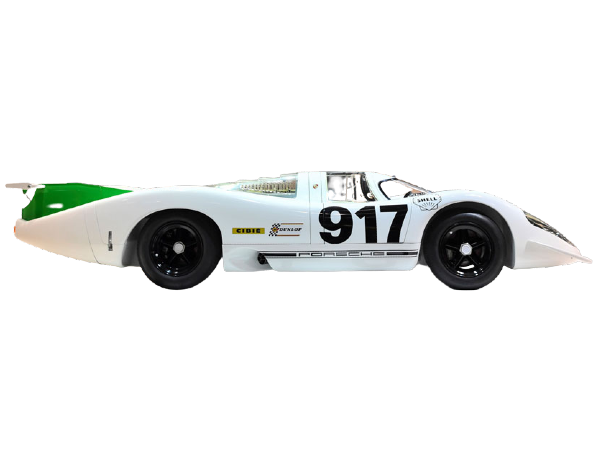
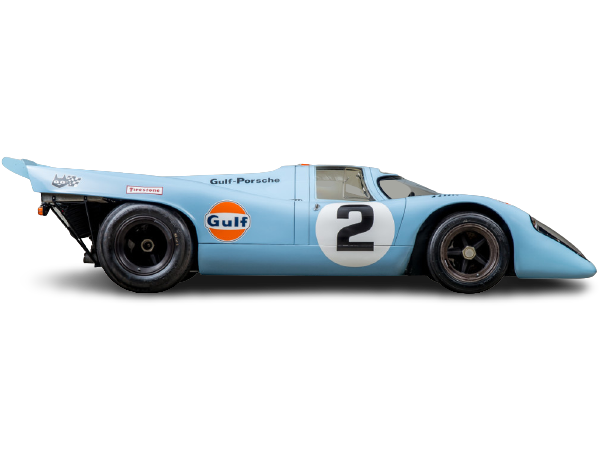
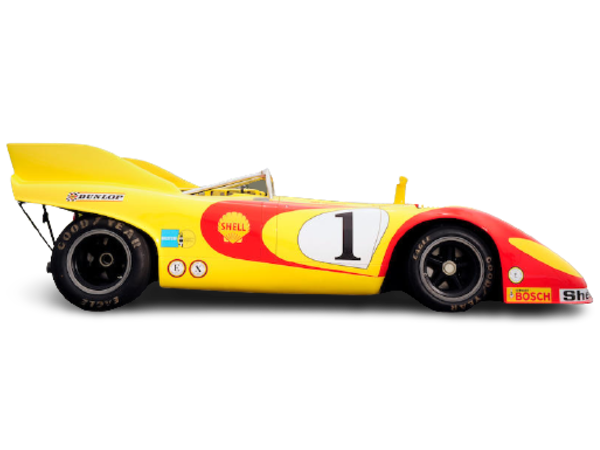
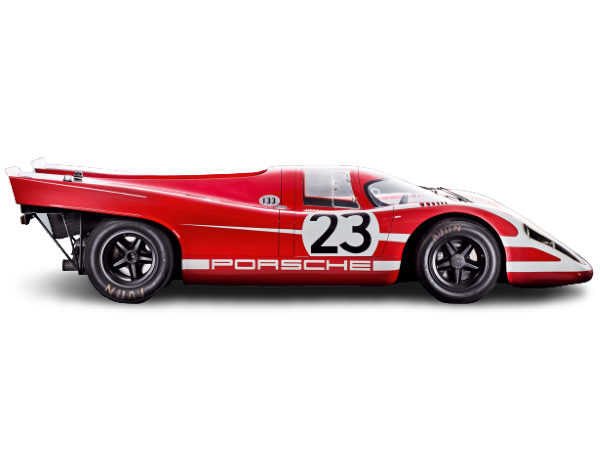
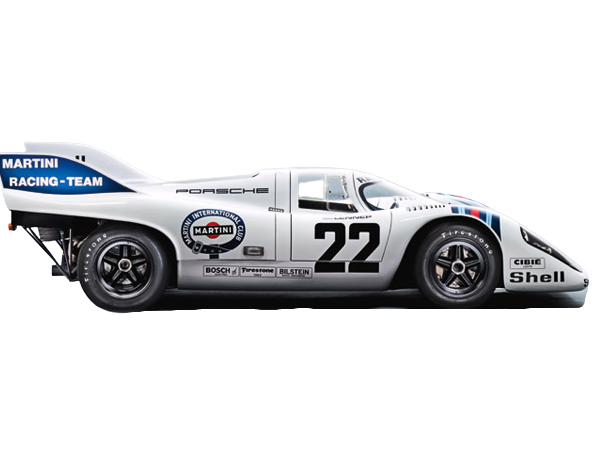
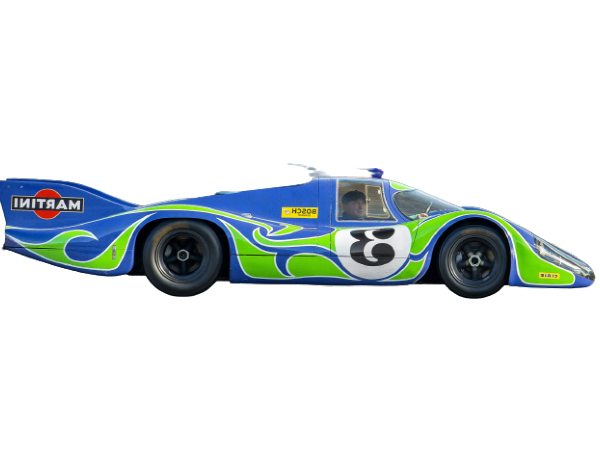
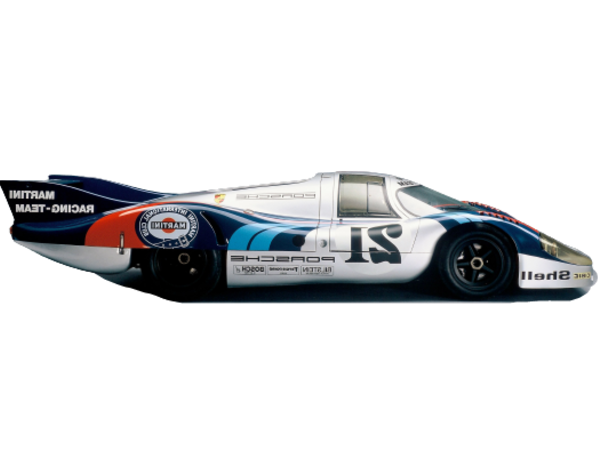
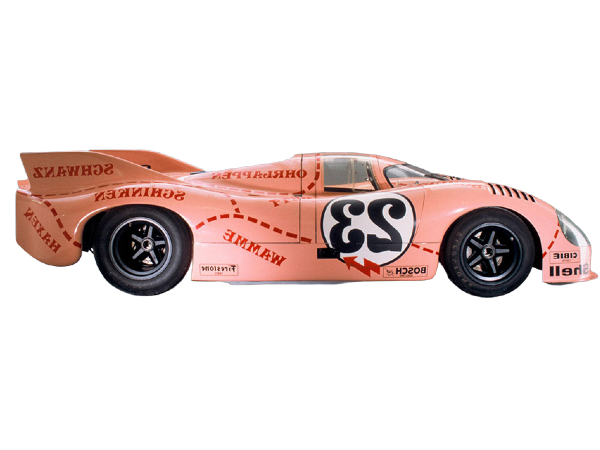
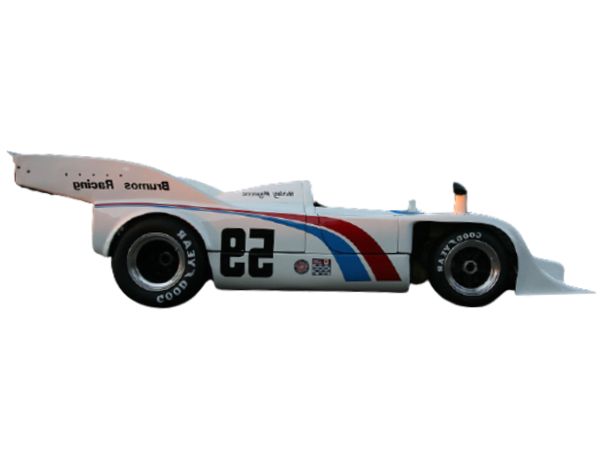
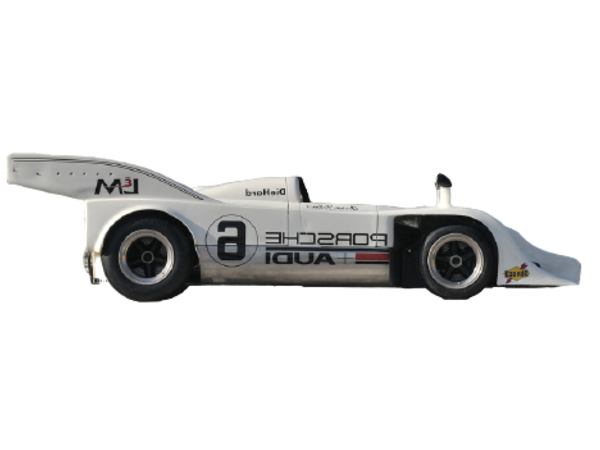
Progress in the Philosophy of Aerodynamics
The doctrine of Ferdinand Piech that read “minimum wind resistance for the highest top speed” was the top priority in the design of the 917. In the Department of Research and Development of Porsche they concentrated on achieving the most aerodynamic as possible. However, they were in a region of performance where they had no prior experience. What they did know was that aerodynamics had a dominating influence on the car.
In cars with low-power engines, the effects of poor aerodynamics had little influence on overall performance, but on the 917 that was supposed to run near 380 km / h it was obvious that aerodynamics would play a big role. Their design philosophy contemplated the eventual change in the balance between drag and ground grip forces, so they paid close attention to the distribution of front and rear ground grip forces.
At first, low air resistance and instability. With an interest in aerodynamics and intensive Wind Tunnel testing, the first 917 had a lower drag than the Porsche 908. From the first tests on the track, Porsche engineers knew they had the fastest car in the world. But as they assumed the 917 of 1969 was difficult to drive. Brian Redman drove one of the cars in practice, after which he said the car was “incredibly unstable and that it was necessary to use the full width of the track when thrown at speed.”
Aerodynamic Development as a result of Track Tests. After several tests, the original tail was removed and a tail molded from aluminum foil, called the “high tail” was put in its place. After this, the car began to perform more efficiently on the track. would come after this, the real event that 917 meant.
The 917 to compete in the Can-Am Series was designed along similar paths. The original 917PA was lightened in its forms, but was eventually fitted with ailerons and spoilers. The next Can-Am version , called the 917/10 , was fitted with a large rear wing to increase downforce.
Influenced by Mark Donohue and Roger Penske , Porsche engineers eventually came to embrace the idea that if you can turn a corner 5 mph faster, you can also take advantage of that speed all the way down the straight.
The aerodynamic numbers show that a speed of 300 km / h was necessary to achieve a drift force that corresponded to its weight. (In the 962C models built 15 years later, and thanks to the aerodynamic improvements, a speed of only 230 km / h was necessary to achieve drift force equal to the weight -950 kg- of the car).
The Wings
In early 1969, the FIA considered a ban on the use of movable ailerons. Porsche was strongly opposed and at Hockenheim , through the engineer Helmut Bott , Head of the Porsche Research Department , he summarized the position of the brand on the problem of the spoilers and defined it with the following points that justified the favorable support of Porsche towards the use of aerodynamics.
- Any aerodynamic application must be “organic” and consistent with the bodywork. It should not exceed the height of the windshield or reduce visibility at all.
- In the event of an accident, neither the pilot nor the public should be in danger from such external devices.
- The maneuverability of a vehicle should not be greatly influenced in case of eventual breakage of the device.
- There must be no possible device maneuvering errors while driving.
- The aerodynamic device must act both in braking and in the “help” of lift in the rear zone of aerodynamic turbulence of the car.
Few could suppose, however, the scandal that would have a chance at the Le Mans race when all movable wings were banned and Porsche insisted until they could use theirs. They argued that if there were people who worked poorly, Porsche was not to blame. Part of the reason was helping them, because Porsche had carried out really painstaking experimentation on the subject of spoilers and their convenience. For example, in 1966, while the long tail was being built for the cars that would participate in Le Mans, Porsche performed in Hockenheim Very interesting experiences with a Carrera 6 equipped with adjustable front and rear wings, operated by the pilot. Measurements made over 200 m. in a curve of about 120 km / h of travel speed, they gave the following results:
- Normal race 6 – lateral acceleration in a curve: 109% (100% is considered the equivalent of 1g (that is, 9.8 m / sec²).
- Carrera 6 with front and rear spoiler – lateral acceleration when cornering: 111.3%
- Race 6 with front and rear ailerons on the outer side of the curve – lateral acceleration when cornering: 110%
- Race 6 with front and rear ailerons on the inside of the curve – lateral acceleration when cornering: 111.3%
As can be seen, the difference was noticeable. In turn, the variation in the aerodynamic coefficient caused by the use of spoilers was measured in the wind tunnel. The results were the following:
- The Carrera 6 without ailerons has a Cw of 0.354.
- with all ailerons, the Cw increases to 0.487.
- with previous ailerons, nothing else, Cw 0.383 and
- with rear spoilers, nothing else, Cw 0.464
The differences were quite large, and from there arose the need to use front and rear ailerons commendable by the suspensions to avoid the increase of Cw in the straights. The dilemma was difficult because Porsche had proven to know how to work and did not defend positions for its own sake. The suspension commanded aileron system was used on the 908/02 and 917 models. But finally the FIA banned them and with the sole exception of Le Mans in no other competition could they be used. In the photo below you can see the solution adopted by Porsche after the ban.
Chassis
The Porsche House made it the norm since 1967 to participate in the tests for the Manufacturers’ Championship only with new machines, because the cost of developing and building them was partially offset by the sale of the used units at the end of each season.
Among several guidelines in the design project of the Porsche 917 was the aim that the car weigh as little as possible. When the 917 put its wheels on the ground, it weighed just over 800 kg. Regulatory, that is, between 150 and 200 kg. less than its direct rivals.
The uncommon lightness was due to Porsche’s particular expertise in the use of lightweight elements. Important for this purpose was the lightweight tube frame, the titanium suspension joints and steering box, the aluminum brake disc center, and finally the titanium caliper and caliper. Even the plastic used for the bodywork was remarkably lightweight. It was fiberglass with polyester resin.
It had a reticulated chassis with pipes so thin that in the first units they loaded the pipes with pressurized gas and connected a pressure gauge so that the pilot could monitor any leaks that could mean a chassis fissure. An old Porsche principle says: “A car can be maneuverable to the extent that it is sensitive to changes to its chassis . ” The first step in this direction: a solid, rigid chassis.
The Porsche 917 has an aluminum tubular structure whose total weight is 47 kilograms. The structure is also multipurpose since the tubes, in addition to resisting their own efforts, are also used as conduits for the oil that is cooled in the front radiator, saving the weight of the external pipes.
The chassis of the Porsche 917 was a good technical job in its time. A Porsche investigation certifies it today.
However, comparing the values with those of the 962C we have the following: the tubular structure of the 917 has a torsional stiffness of approximately 5000 to 6000 Newton / degree. The torsional stiffness of the monocoque of the 962C built in 1985/86 is 20,000 Newton / degree.
The Porsche 917Ks were built with a space welded aluminum body, which weighed 1760 pounds, while the 917/30 had a space welded body, but magnesium alloy, which had a total weight of 1860 pounds.
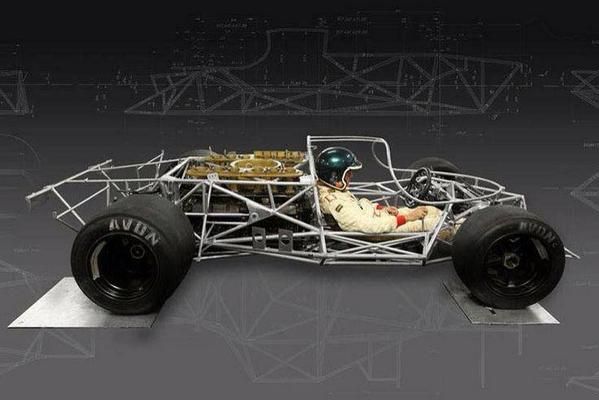
Transparencies
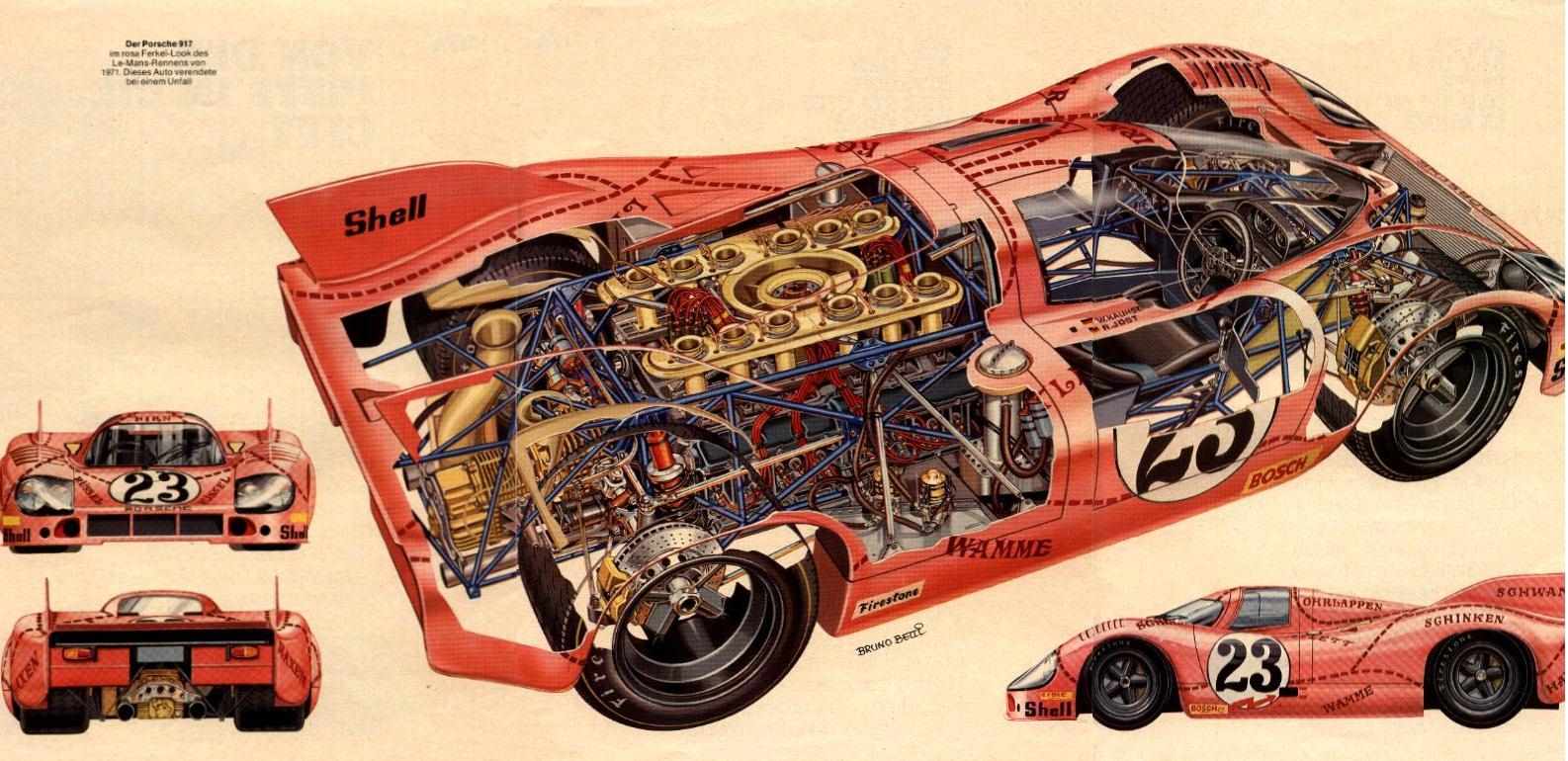
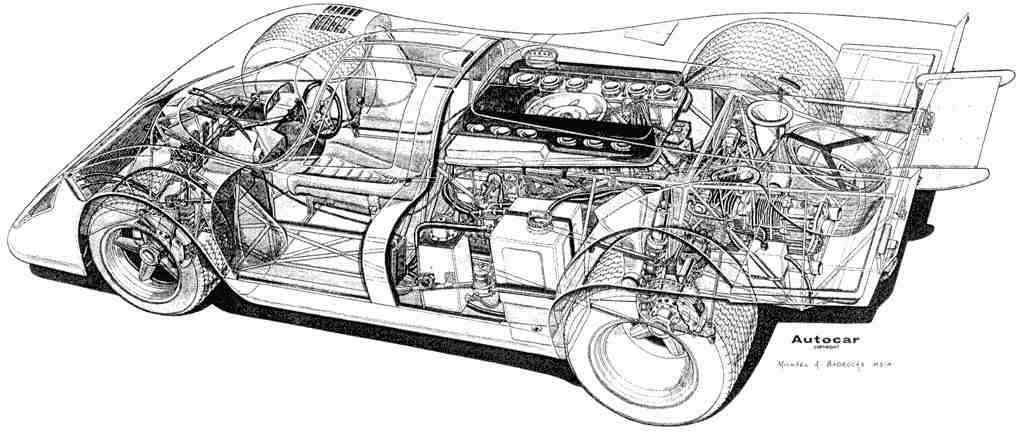
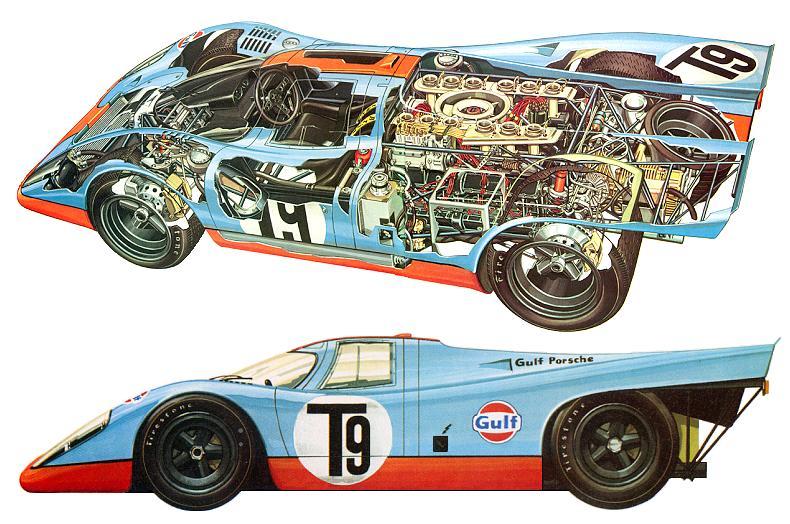
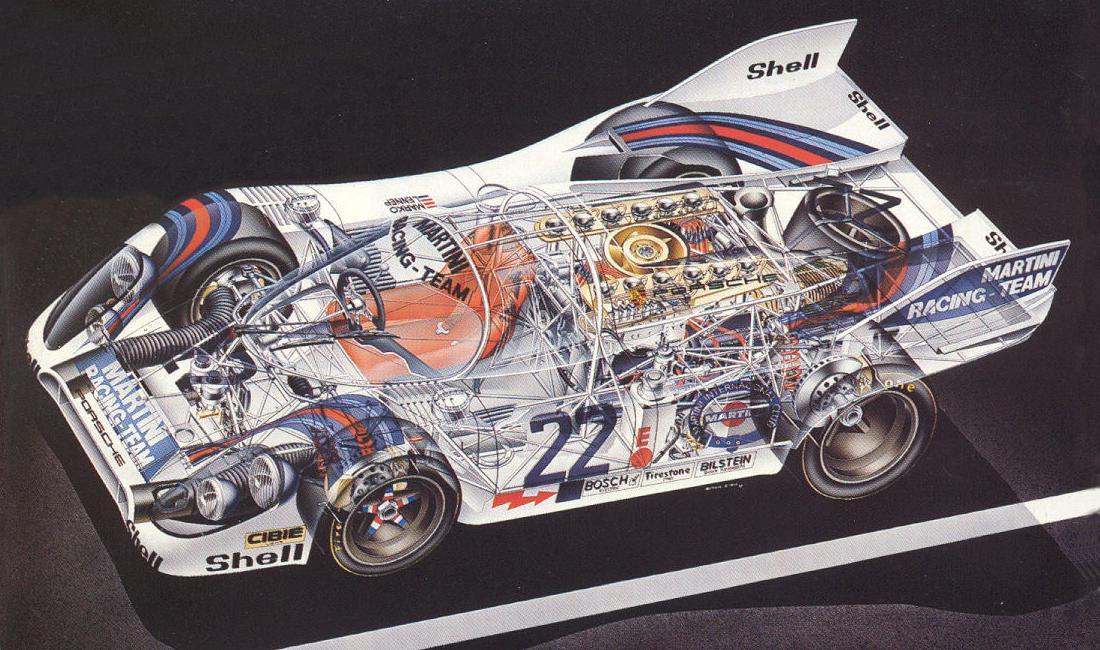


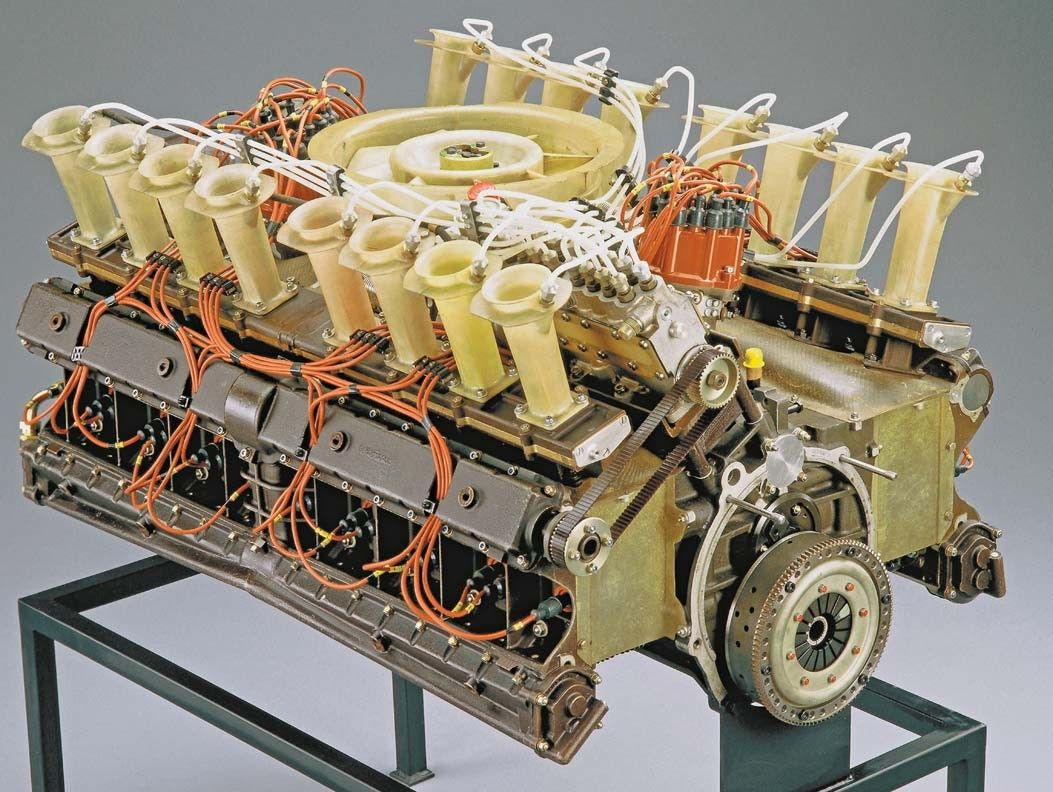
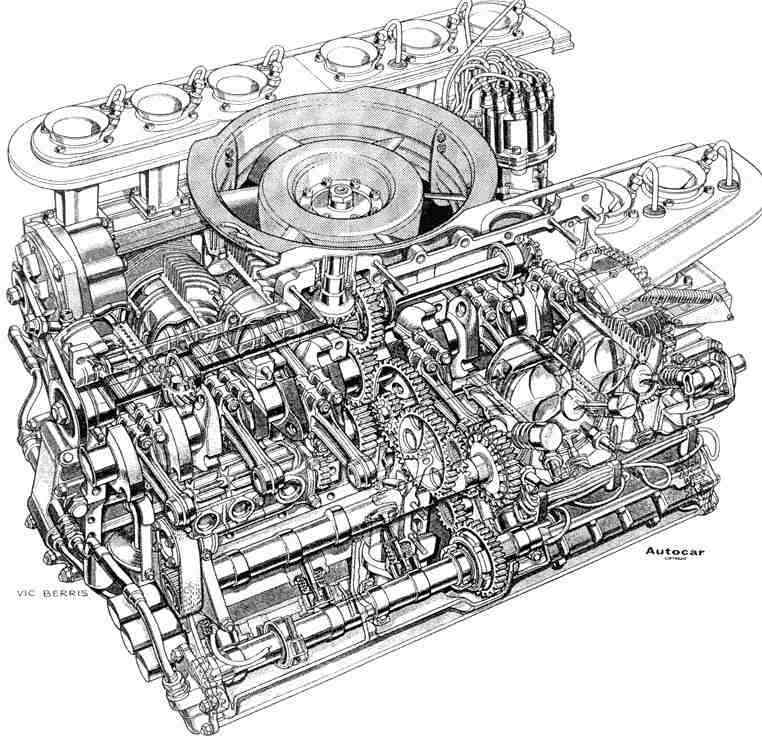
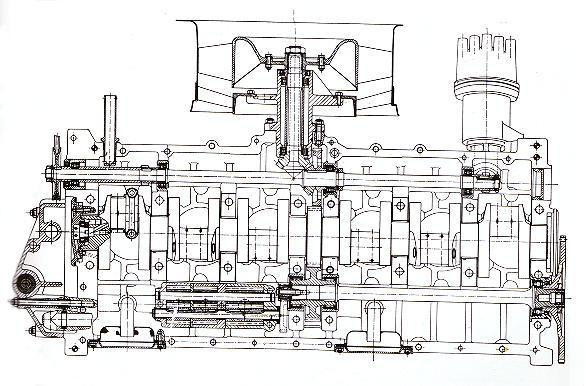
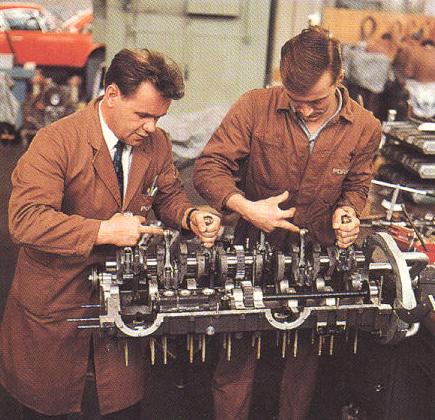
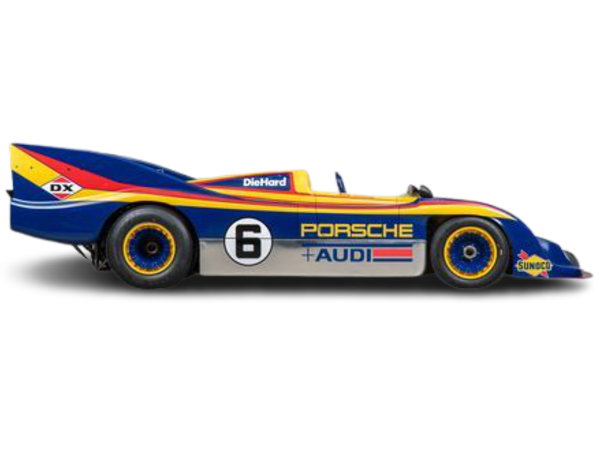
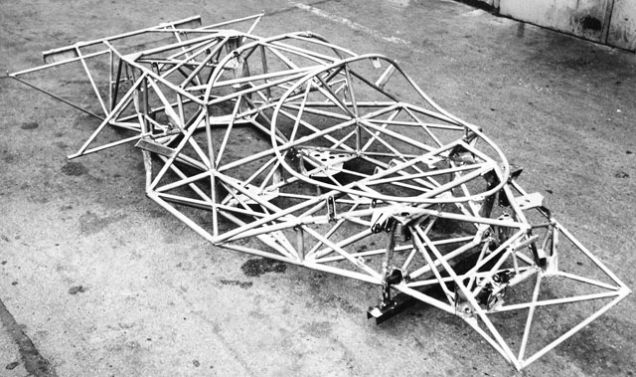
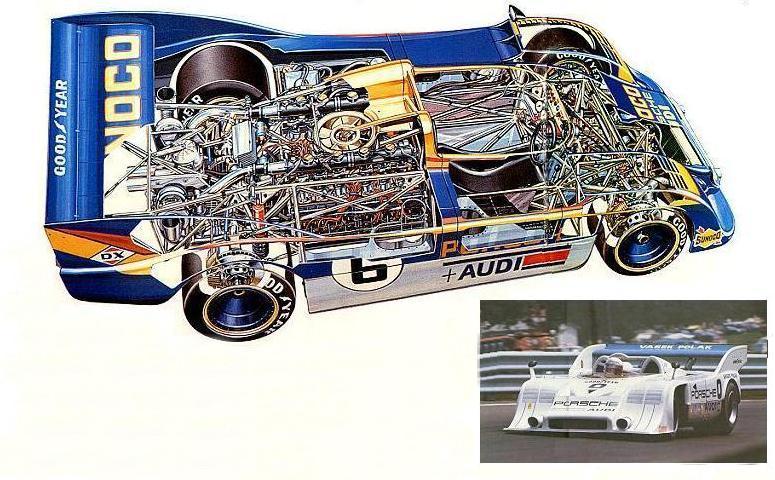
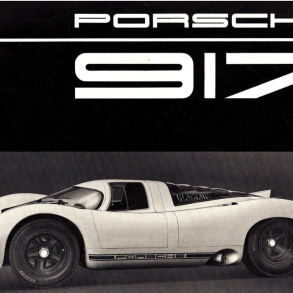
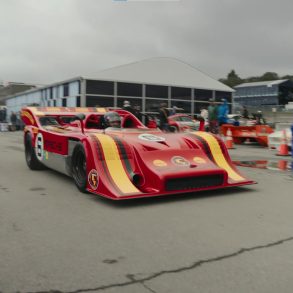
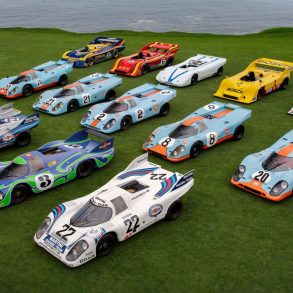
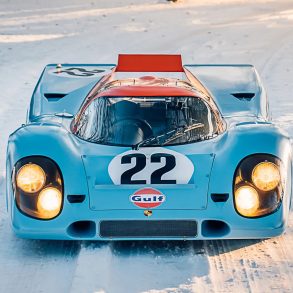
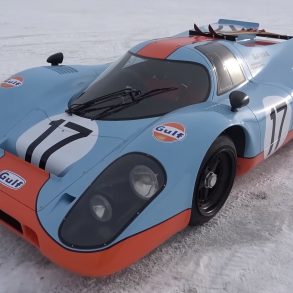
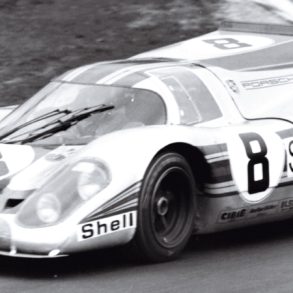
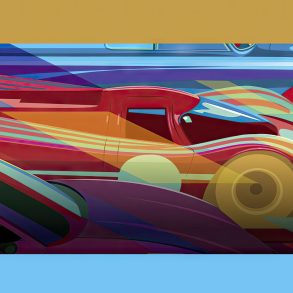
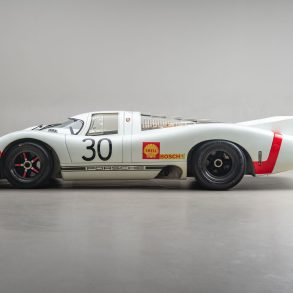

Hi,
Stop provide nonsense about the 912 engine!
The 917 engine is not a boxer engine!
“The first thing we did was to put two design drawings of the 911 six-cylinder in a row and see if it fit,” says Mezger. Nevertheless, the claim that the 917 engine is nothing more than two coupled 911 engines or even an eight-cylinder from the 908 extended by four cylinders is simply nonsense: the twelve-cylinder engine, internally called 912, is a V-engine with a cylinder angle of 180 degrees, unlike the previous engines. On the one hand, this saves length because the offset of the left to the right cylinder row now only corresponds to a connecting rod bearing width and not half the cylinder distance.
Above all, a V12 engine needs only six connecting rods and eight main bearing journals instead of 12 or 14 – and the diameters of the connecting rod journals can be slightly reduced for the same load. Since the necessary oil pressure can now also be lower, this, together with the smaller bearings, considerably reduces friction losses.
0
I can’t find a way to “thumbs up” the previous comment, but it is correct:
“Ian Bamsey’s 1987 book quotes Ferdinand Piëch: ‘From our experience of the six and eight-cylinder boxers we knew that internal ventilation was a major problem, not allowing us to reach the power of the Formula One engines. The optimum solution was to put two con rods on one pin, creating a 180 degree V12.’”
Gillotti, Jay. Gulf 917. Dalton Watson Fine Books, 2018, p. 28.
0